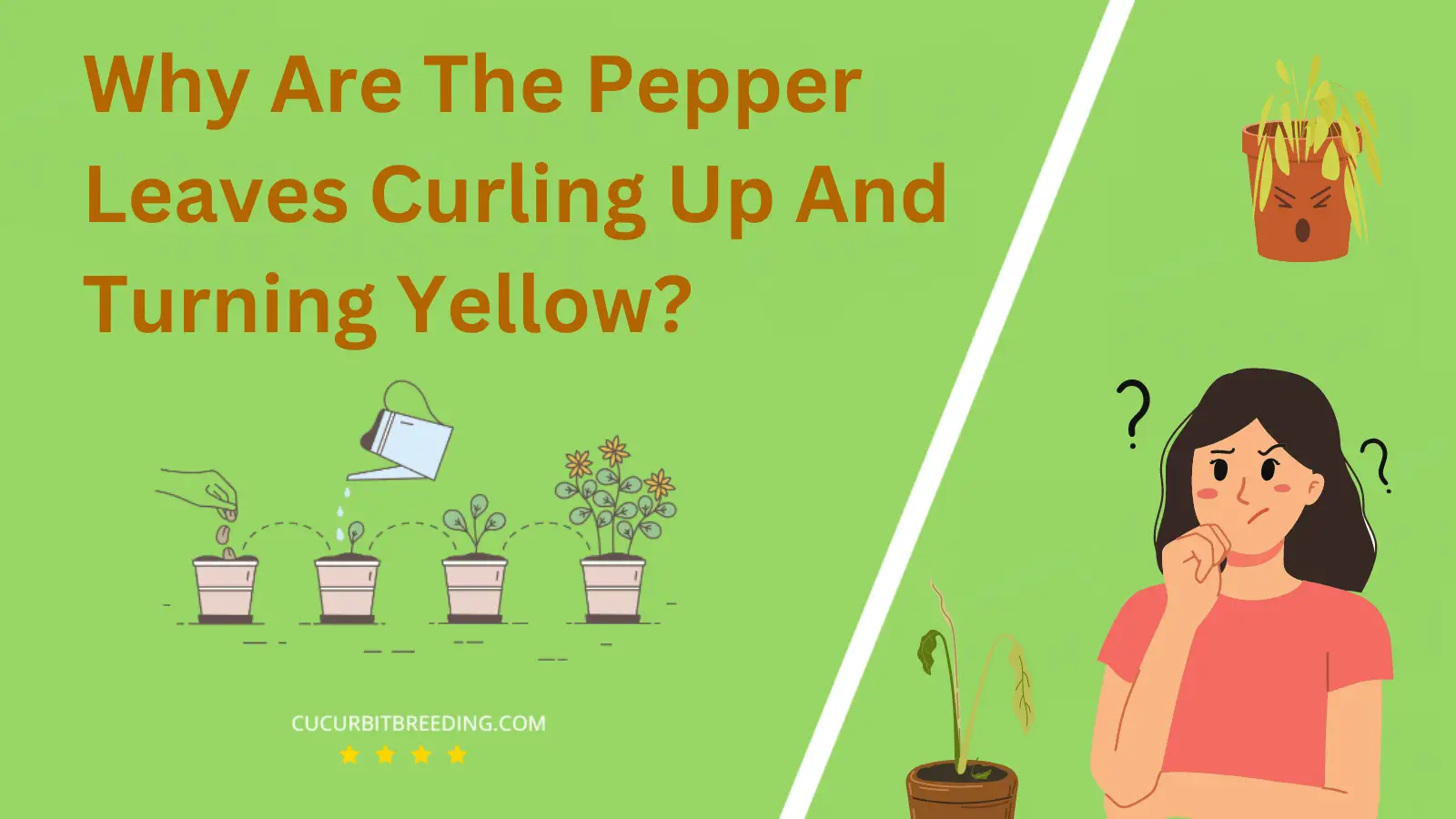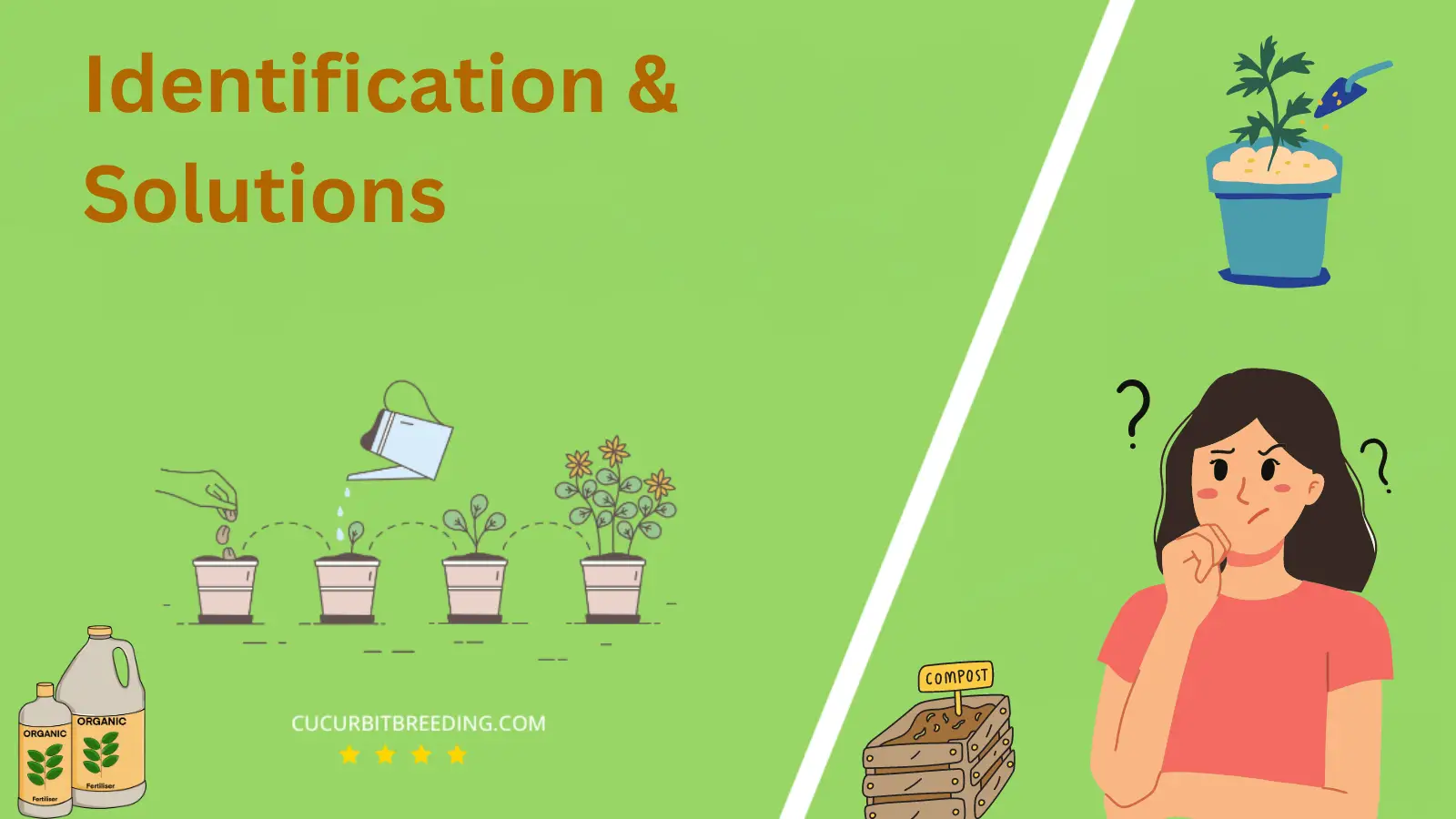
Observing pepper leaves curling up and turning yellow can strike fear in the heart of any devoted gardener. This common symptom suggests your prized plants might be waging a silent battle beneath the expanse of your garden’s verdant canopy.
In fact, unraveling this enigma could reveal a complex tapestry of possible culprits, from pest infestation to nutrient deficiencies. But fear not, our journey into this horticultural mystery will shed light on the causes and remedies.
Why Are The Pepper Leaves Curling Up And Turning Yellow?
1. Nutrient deficiency
| Description | Nutrient deficiency causes yellowing and curling of pepper leaves. |
|---|---|
| Solution | Increase soil nutrient levels by using a balanced fertilizer to prevent pepper leaves from curling and turning yellow. |
Pepper plants that show signs of curling and yellowing leaves are often suffering from **nutrient deficiency**. This can particularly be an indication of a lack of essential macro and micro-nutrients like nitrogen, phosphorus, potassium, magnesium, calcium, and iron. These nutrients are crucial to the proper growth and development of the plant. Their deficiency can lead to stunted growth, leaf curling, yellowing, and general poor health of the plant.
To address this issue, regular fertilizing of your plants with a well-balanced plant food high in these nutrients can help restore their health. **Fertilizing** can replenish the nutrient content in the soil, thus meeting the nutrient demands of your plants. Be sure to follow the instructions on the fertilizer package to avoid over-fertilizing, as this can damage your plants even further.
Soil pH balance is another crucial factor – if it is too alkaline or too acidic, it can prevent the plants from taking up nutrients even if they’re available. Therefore, **pH balancing** of the soil should not be overlooked. You can test the soil pH and adjust it accordingly using relevant soil amendments.
**Water management** is also key as overwatering can lead to a loss of nutrients from the soil, while underwatering can cause nutrient uptake issues. Ensure that your plants are getting a consistent amount of water, generally when the top few inches of the soil are dry.
In the long term, incorporating organic matter into your soil — like compost or aged manure — can help improve its nutrient content and structure.
2. Overwatering
| Description | Overwatering can lead to yellowing and curling of pepper leaves due to root suffocation. |
|---|---|
| Solution | Reduce watering and ensure proper drainage to prevent waterlogged soil, allowing roots to breathe. |
Effects of Overwatering:
Overwatering can lead to a condition known as waterlogging which stifles the plant’s roots from accessing the required oxygen. This often results in the yellowing and curling of pepper plant leaves as the plant essentially drowns and can no longer function properly.
Solutions to Overwatering:
To rectify this, start by moderating your watering frequency to allow the soil to dry slightly between each watering session. Consider integrating a water-meter to accurately identify when the plant needs to be watered. Alternatively, touch the top layer of the soil with your fingers; if it is dry, then it’s time to water the plant. By adhering to a watering schedule based on the plant’s real needs rather than a set timetable, you can help prevent overwatering.
If the plant is already severely waterlogged, you may need to repot the plant, replacing the waterlogged soil with fresh, well-draining soil. Make sure the plant pot has good drainage holes. If necessary, add some organic matter, such as compost or peat moss, to improve the soil structure and water-holding capacity.
Maintenance and Prevention:
For future prevention, paying attention to the plant’s environmental conditions, such as humidity and temperature, as well as observing changes in the plant’s appearance and growth, can help you identify potential overwatering issues before they become serious. Having an understanding of the specific watering needs of your pepper plant can go a long way in maintaining its health.
Finally, it’s important to note that solving overwatering problems can take time. Do not expect immediate results as the affected leaves may not recover, but new growth should appear healthy. Be patient, keep a keen eye, and with consistent care, your pepper plant can recover and thrive.
3. Poor drainage
| Description | results in waterlogged soil, causing nutrient deficiencies and root rot, leading to yellowing and curling leaves. |
|---|---|
| Solution | Improve drainage to prevent pepper leaves from curling up and turning yellow. |
Leaf curling and yellowing in pepper plants can often be attributed to poor drainage. Poor drainage leads to waterlogged soil or overwatering, which in turn can cause root rot. Root rot is detrimental to plants because it inhibits the roots’ ability to absorb nutrients hence causing nutritional deficiency. This manifests as yellowing leaves that may curl inward.
To address the problem of poor drainage, start by checking the planting location and the type of soil used. If the soil has high clay content, consider replacing it with well-draining soil or adding organic matter like compost to improve its structure and drainage. Consider growing your peppers in raised beds or containers if the ground is naturally waterlogged. When watering, do it sparingly, ensuring the soil is dry to the touch before the next watering session to prevent overwatering. With proper care and adjustment to your watering practices, the pepper plants should recover and thrive.
4. Pest infestation
| Description | results in waterlogged soil, causing nutrient deficiencies and root rot, leading to yellowing and curling leaves. |
|---|---|
| Solution | Improve drainage to prevent pepper leaves from curling up and turning yellow. |
Pepper plants can suffer from the adverse effects of pest infestations. Pests such as aphids, thrips, and spider mites can cause the leaves of your pepper plants to curl up and turn yellow. Pests are often attracted to a plant’s sap, and their feeding habits can impair the plant’s ability to circulate nutrients and water effectively, which in turn can cause leaf curling and yellowing.
To resolve this issue, and help your pepper plants recover, you may need to apply specific pest-control measures. Start by identifying the type of pest causing the trouble, and then use the appropriate pesticide or natural methods of pest control. Insecticidal soaps or neem oil can be effective in dealing with these pests. In addition, you can introduce beneficial insects like ladybugs which are natural predators to these pests. Ensure you also maintain proper watering and feeding schedules, as healthily maintained plants are less likely to succumb to pest infestation.

5. Disease
| Description | Improve drainage to prevent pepper leaves from curling up and turning yellow. |
|---|---|
| Solution | Apply a balanced fertilizer with proper nutrients, increase humidity, and treat with appropriate fungicide if necessary. |
Among several reasons why your pepper leaves might be curling up and turning yellow, one of the most common is disease. Diseases such as bacterial leaf spot or fungal infections can cause these symptoms in peppers. Unhealthy plants might not fight off pathogens as effectively, and when a disease takes hold, it can interrupt the normal processes of the plant, leading to yellowing and curling leaves.
The best way to address this issue is to first confirm the presence of a disease. This may involve a visual inspection for signs of bacterial leaf spot or fungal disease, or sending a sample to a plant diagnostic laboratory for testing. Once an illness is confirmed, appropriate action can be taken. Bacterial diseases may require removal of the infected plant to prevent spreading, and fungal diseases can often be treated with a fungicide.
In addition to these direct response methods, prevention plays a key part in handling diseases. Ensuring optimal watering practices, providing good air circulation around the plants, and using disease-resistant varieties can greatly reduce the risk of disease in your garden.
6. Excessive heat or cold
| Description | can disrupt the balance of nutrients and inhibit chlorophyll production, causing leaf discoloration and curling. |
|---|---|
| Solution | Provide proper temperature control through shading or insulation to prevent leaf curling and yellowing. |
Pepper plants are particularly sensitive to temperature fluctuations. A sudden cold snap or a strong heatwave can stress the plants and result in symptoms such as leaf curling and yellowing. Excessive heat can cause the plant to lose water rapidly through its leaves, triggering leaf curl, while excessive cold can disrupt the plant’s cellular functions, causing yellowing.
To mitigate these temperature-related issues, monitor the growing environment’s temperature closely. If temperatures are exceedingly hot, provide shade to your pepper plants during the peak hours of sunlight, or consider moving them to a cooler location if possible. Increasing watering during heat waves may also help to cool the plant and prevent dehydration. On the other hand, if temperatures are too cold, move the plants indoors or to a warmer location. If this is not possible, consider using insulating materials like a frost cloth to protect the plant from the cold. You may also need to adjust your watering habits, as overly damp soil in cold conditions can contribute to leaf yellowing.
7. Natural aging process
| Description | The natural aging process of leaves causes them to turn yellow due to reduced chlorophyll production. |
|---|---|
| Solution | Maintaining a healthy lifestyle with regular exercise and a balanced diet can slow down natural aging. |
Pepper plants turning yellow and curling up is typically a symptom of overwatering or waterlogged soil. Overwatering can cause the pepper plant’s roots to become waterlogged and oxygen-starved. It can also lead to the spread of root rot which hinders the effective absorption of nutrients, causing leaves to turn yellow.
The solution to overwatering starts with modifying your watering schedule. Rather than watering on a strict schedule, assess the soil’s moisture levels before watering again. Peppers typically prefer a moderately moist environment – not too wet and not too dry. Stick your finger about an inch into the soil. If the soil is dry, it’s time to water. Otherwise, wait a day and check again.
Improving soil drainage can also help any excess water to drain away more easily, alleviating waterlogged conditions. Adding organic matter to your soil, such as compost or well-rotted manure, can enhance its structure and drainage. For container plants, ensure the container has enough drainage holes to let excess water out. If symptoms persist, consider root rot as a probable cause. If infected with root rot, it may be best to remove and replace the plant.